The Dagda stands as a towering figure within Irish mythology, embodying a complex blend of strength, wisdom, and paternal care. As a pivotal member of the Tuatha Dé Danann, the race of deities that represents the quintessence of pre-Christian Gaelic gods, the Dagda’s narrative weaves through the tapestry of Irish myth, marking him as a central figure in the ancient lore of Ireland. His significance extends beyond his formidable prowess in battle to include aspects of fertility, agriculture, and leadership, making him a multifaceted deity whose influence is felt across various domains of life and the natural world. The Dagda’s interactions with other deities, such as his strategic marriages and alliances, further highlight his crucial role in the celestial hierarchy and underscore the interconnectedness of the mythological world he inhabits. His associations with prominent figures like the Morrigan, Lugh, and Brigid not only enrich the stories in which he features but also underscore the Dagda’s integral position within the pantheon of the Tuatha Dé Danann.
Contents
Etymology of the Name
The name “Dagda” is derived from the Old Irish Dagodeiwos, meaning “the good god.” This title, however, does not merely refer to moral goodness but signifies “skillfulness” or “competence,” reflecting the Dagda’s revered status as a master of arts, warrior, and druid. His other appellations, such as Eochaid Ollathair (“All-Father” or “Great Father”) and Ruad Rofhessa (“Lord of Great Knowledge”), further emphasize his paternal aspect and his domain over wisdom and magic. The variety of names and titles attributed to the Dagda highlight his multifaceted nature and the broad spectrum of powers under his command.
The implications of the Dagda’s names on his perceived roles and powers are profound. As “the good god,” he embodies the ideal of a protector and provider, ensuring the prosperity and well-being of his people and the land itself. The title Eochaid Ollathair positions him as a father figure, not just to his own offspring but to the entire community of gods and humans alike, reinforcing his role as a guardian and guide. Meanwhile, Ruad Rofhessa underscores his deep connection to the druidic tradition, where knowledge and magic are paramount. Together, these names paint a picture of the Dagda as a deity of unparalleled strength and wisdom, whose influence permeates all aspects of life and the natural world, underscoring his central role in the pantheon and the cultural imagination of ancient Ireland.
Attributes and Symbols
The Dagda is associated with several powerful symbols that underscore his dominion over life, death, and abundance. These symbols – the cauldron, club, and harp – are not merely tools of his trade but are deeply imbued with the cultural and spiritual ethos of the Celtic people.
The Cauldron (Coire Ansic): Perhaps the most emblematic of his possessions, the Dagda’s cauldron is a symbol of inexhaustible sustenance and abundance. It is said that no one ever left the Dagda’s table unsatisfied, a testament to the cauldron’s never-ending provision. This attribute reflects the Celts’ deep respect for hospitality and the importance of communal feasting as a bond of social and cosmic harmony.
The Club (Lorg Mór): The Dagda’s club, capable of killing with one end and resurrecting with the other, embodies the duality of life and death. This mighty weapon, requiring a wheel to transport due to its enormous size, represents the Dagda’s power over the cycle of life, emphasizing the inevitability of death and the potential for rebirth. In Celtic belief, this cycle was a fundamental aspect of the natural and spiritual worlds, mirroring the seasonal cycles and the journey of the soul.
The Harp (Uaithne): The Dagda’s harp, which could control the seasons and influence human emotions, symbolizes the harmony of the cosmos and the interconnectedness of all things. The ability to bring joy, sorrow, or peace through music underscores the belief in the transformative power of art and the bardic tradition’s central role in Celtic culture. The harp, as a microcosm of the universe’s order, reflects the Dagda’s role as a guardian of cosmic balance and the natural order.
Physical Appearance and Depictions
In mythological narratives and artistic depictions, the Dagda is often portrayed as a robust figure, embodying the ideal of physical strength and vitality. However, his appearance also carries elements of the everyman, making him relatable and accessible to the people who venerated him.
Artistic Representations: In art, the Dagda is frequently shown with his symbolic attributes, which highlight his powers and responsibilities. His robust form is sometimes exaggerated to emphasize his connection to the earth and its bounty. The depiction of his large belly, in particular, symbolizes abundance and the capacity to nurture and sustain life.
Variations in Appearance: Variations in the Dagda’s portrayal often reflect the specific aspect of his nature being emphasized. When depicted as a warrior, his formidable presence and strength are highlighted. As a father figure, his more genial and protective qualities may be brought to the fore. These variations are not contradictory but rather reflect the multifaceted nature of his character. The depiction of the Dagda in peasant-like attire, with a rustic tunic, underscores his connection to the land and the common people, symbolizing his accessibility and his role as a protector of the tribe.
The Dagda’s physical appearance and the symbols associated with him are rich with meaning, encapsulating the values, beliefs, and aspirations of the Celtic world. Together, they paint a picture of a deity deeply woven into the fabric of life, death, and the natural order, reflecting the profound reverence in which he was held in ancient Celtic society.
Family and Relationships
The Dagda, as one of the most prominent deities in Irish mythology, boasts a vast array of familial connections that underscore his influence and standing among the Tuatha Dé Danann. His offspring, consorts, and interactions with other deities paint a rich tapestry of relationships that not only highlight his prowess and benevolence but also his central role in the mythological narratives of ancient Ireland.
Children and Consorts
The Dagda’s children are numerous, each embodying different aspects of life, wisdom, and the natural world. Among his most notable offspring are Aengus (or Angus Óg), Brigid, and Midir. Aengus, born of the Dagda’s affair with the river goddess Boann, is the god of love, youth, and poetic inspiration. Brigid, a figure of immense reverence, is associated with healing, fertility, and craftsmanship. Midir, linked to wealth and the underworld, further exemplifies the Dagda’s wide-reaching domains.
His consorts, too, are of significant mythological importance. The Morrígan, often associated with war and fate, is one of his partners, emphasizing the Dagda’s connection to the themes of battle and sovereignty. His union with Boann, which results in the birth of Aengus, symbolizes the Dagda’s influence over the rivers and waters of Ireland, further cementing his role as a deity of fertility and abundance.
Interactions with Deities
The Dagda’s interactions with other deities are pivotal, often involving alliances, marriages, and strategic encounters that influence the course of events in the mythological landscape. His relationship with the Morrígan, for instance, during the festival of Samhain, reflects his role in the cycles of life and death, war and peace. His clever negotiation and union with Boann illustrate his wisdom and his dominion over nature and the elements.
Mythological Tales and Adventures
The Dagda’s narratives are filled with tales of battle, magic, and cunning, each underscoring his strength, intelligence, and fatherly care for both his people and the land.
Key Stories
One of the most iconic tales involves the Dagda’s cauldron, which never runs empty and symbolizes endless sustenance and prosperity. His club, capable of killing with one end and bringing to life with the other, signifies his power over life and death. The story of the Dagda’s harp, which controls seasons and emotions, emphasizes his role as a master of harmony and balance in the world.
His involvement in the battles of Mag Tuired showcases his strategic brilliance and martial prowess. In the first battle, his leadership helps secure victory for the Tuatha Dé Danann against the Fir Bolg. In the second, against the Fomorians, his role is crucial in the defeat of this chaotic force, illustrating his protective nature and his place as a guardian of order.
Significance in Irish Mythology
These tales and adventures are not mere stories; they are reflections of the values, beliefs, and concerns of the ancient Irish people. The Dagda’s narratives, with their themes of balance, protection, and wisdom, serve as allegorical representations of the forces of nature, society’s needs, and the quest for harmony in the face of adversity.
Through his familial connections and mythological exploits, the Dagda embodies the ideal of leadership, wisdom, and paternal care. His stories, deeply ingrained in Irish cultural memory, continue to inspire and resonate, highlighting the enduring legacy of this mighty god within the rich tapestry of Celtic myth and folklore.
The Dagda’s Powers and Abilities
The Dagda, revered as one of the most potent deities within the pantheon of the Tuatha Dé Danann, possesses a vast array of powers that underscore his dominion over life, death, and the natural world. Known for his control over the seasons and his ability to ensure abundance, the Dagda’s powers reflect his central role as both a father-figure and a king within Celtic mythology.
One of the Dagda’s most emblematic abilities is his control over life and death, a power symbolized by his formidable club or staff. With one end capable of slaying nine men in a single blow and the other able to restore the slain to life, this weapon embodies the Dagda’s dual nature as both a destroyer and a giver of life. This aspect of his power highlights the cyclical view of life and death prevalent in Celtic belief, where death is but a passage to rebirth.
The Dagda’s ownership of an inexhaustible cauldron further cements his role as a provider and nurturer. This cauldron, which ensures that no one ever leaves his presence hungry, symbolizes the Dagda’s ability to guarantee abundance and prosperity. It represents the Dagda’s sovereignty over the land’s fertility, ensuring the well-being of his people and the continuity of life.
His magical harp, which commands the seasons and influences human emotions, signifies the Dagda’s harmonious relationship with the cosmos. The power to bring order to the seasons underscores his kingship, portraying him as a stabilizing force that maintains the balance of the natural world.
Role in Celtic Religion and Festivals
The Dagda’s significance within ancient Celtic religion is profound, with his attributes and powers making him a central figure in religious observances and rituals. As a god of abundance, fertility, and protection, the Dagda was likely invoked in ceremonies aimed at ensuring the prosperity of the community and the fertility of the land.
His association with Samhain, a pivotal festival in the Celtic calendar, highlights his connection to the cycle of life and death. Samhain, marking the end of the harvest season and the beginning of winter, was a time when the veil between the worlds was thinnest, allowing for communication with the ancestors and the Otherworld. The Dagda’s engagement with the Morrigan, a goddess associated with sovereignty and fate, during Samhain symbolizes the renewal of life forces and the reaffirmation of the order between the worlds.
Other significant festivals likely saw the Dagda’s influence as well, with his powers over abundance and protection being sought to ensure the community’s safety and prosperity throughout the year. The Dagda’s role during these festivals would have been multifaceted, encompassing protection, provision, and the maintenance of cosmic order.
Cultural Significance and Legacy
The Dagda’s enduring impact on Celtic culture transcends the annals of ancient mythology to permeate various aspects of modern spiritual practices and cultural identity. As a pivotal figure within the pantheon of the Tuatha Dé Danann, the Dagda embodies the quintessential traits of leadership, protection, and abundance, aspects that were highly valued in ancient Celtic societies. His representation as both a mighty warrior and a benevolent father figure reflects the duality of life’s nature, encapsulating themes of creation and destruction, life and death, that are central to human existence.
Over the centuries, the Dagda has been remembered and revered through a myriad of lenses, from the bardic tales of ancient times to the scholarly works of medieval monks who preserved these narratives. In contemporary settings, the Dagda’s legacy is evident in the resurgence of interest in Celtic spirituality and pagan practices. Modern pagans and followers of neo-druidism particularly venerate the Dagda for his association with the land, fertility, and as a guardian of sacred knowledge and wisdom. Rituals and festivals in honor of the Dagda are celebrated, invoking his blessings for abundance, protection, and guidance. The Dagda’s symbols, such as the cauldron and the harp, continue to serve as powerful metaphors for life’s sustenance and harmony within the natural world.
Comparative Mythology
When examining the Dagda through the lens of comparative mythology, intriguing parallels emerge between him and deities from other mythological traditions. For instance, the Norse god Odin shares several attributes with the Dagda, including wisdom, magic, and a role as a psychopomp guiding souls to the afterlife. Both figures are seen as all-father deities, wielding significant power and knowledge, yet deeply involved in the affairs of mortals and the maintenance of cosmic order.
Similarly, the Greek god Zeus and the Roman god Jupiter, as sky and thunder gods, bear resemblance to the Dagda’s dominion over the elements and his kingly status. However, unlike Zeus and Jupiter, whose narratives often highlight their amorous adventures, the Dagda’s relationships underscore his role in fostering fertility and abundance, reflecting a more integrated connection with the earth and its cycles.
These comparisons highlight universal themes prevalent in world mythology, such as the figure of the wise ruler who wields power with both might and benevolence. The recurring motif of a deity who bridges the realms of life and death underscores humanity’s enduring fascination with the mysteries of existence and the afterlife. The Dagda’s multifaceted nature—encompassing warrior strength, paternal care, and druidic wisdom—embodies the complexity of the divine, offering insights into how ancient cultures sought to understand the forces shaping their world.
Through the comparative study of mythology, the Dagda’s significance extends beyond the Celtic tradition to illuminate shared human concerns and aspirations. His legacy, both as a cultural symbol and a spiritual guide, continues to inspire and resonate, reflecting the timeless quest for knowledge, protection, and harmony with the natural world.
Archaeological Evidence and Historical Sites
The Dagda, one of the preeminent deities of the ancient Irish pantheon, is intertwined with several archaeological sites and historical findings that shed light on his significance in Celtic religion and culture. Notably, Newgrange, a part of the Brú na Bóinne complex in County Meath, Ireland, stands as a testament to the Dagda’s storied legacy. This Neolithic passage tomb, dating back to around 3200 BCE, is older than both Stonehenge and the Egyptian pyramids, serving as a remarkable piece of prehistoric architecture that has fascinated scholars and laypeople alike.
Newgrange is often associated with the Dagda, who, according to mythology, used it as a dwelling for himself and his family. The winter solstice phenomenon, where the rising sun illuminates the passage and chamber at the heart of Newgrange, echoes the themes of rebirth and renewal that are central to the Dagda’s mythology. This alignment with the solstice underscores the Dagda’s connection to the cycles of life, death, and rebirth, as well as his role as a god of light and darkness.
Furthermore, archaeological findings of cauldrons and other ritual objects in the vicinity of sites linked to the Dagda offer insights into the kinds of worship and ceremonies that might have been conducted in his honor. These artifacts suggest a culture deeply connected to the earth and the cycles of nature, with the Dagda at the center of these spiritual practices.
Conclusion
The Dagda’s importance in Irish mythology cannot be overstated. As a figure of immense power, fertility, and wisdom, he embodies the multifaceted nature of the divine in ancient Celtic culture. His stories, rich with themes of life, death, and rebirth, resonate with universal aspects of the human experience, speaking to the deep connections between people, the land, and the cosmos.
Throughout the ages, the Dagda has been remembered not only as a king among the deities but also as a father figure, a protector, and a provider. His enduring legacy is evident in the continued fascination with the sites and myths associated with him, as well as in the reverence he receives in contemporary pagan practices. Modern followers of Celtic spirituality often look to the Dagda for guidance in rituals and ceremonies, drawing inspiration from his strength, his wisdom, and his deep connection to the natural world.
In comparing the Dagda to deities from other mythological traditions, it becomes clear that figures like him—gods of creation, fertility, and wisdom—are universal archetypes, reflecting the shared human longing for understanding, protection, and prosperity. The Dagda’s enduring relevance in the modern world speaks to the timeless nature of these desires, as well as to the lasting impact of Celtic culture and mythology on the collective imagination. As we continue to explore and honor the stories of the Dagda, we are reminded of the power of myth to connect us to our past, to the earth, and to each other, bridging cultures and generations.
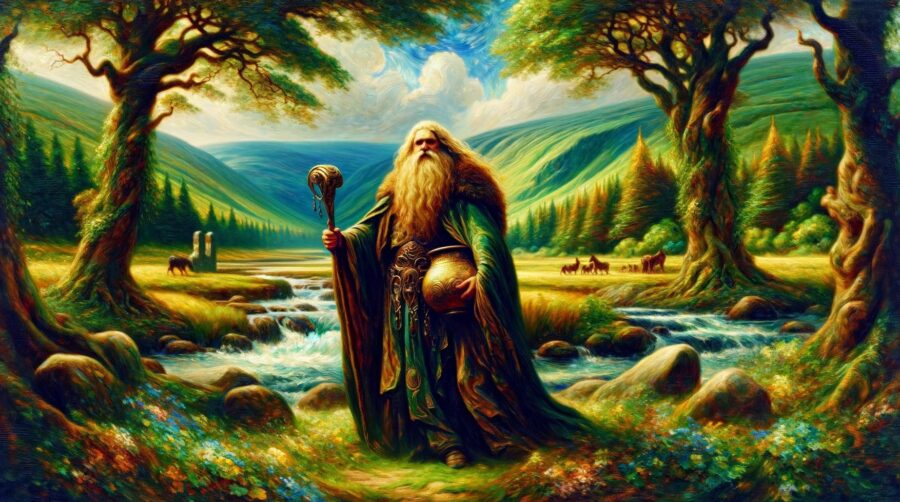


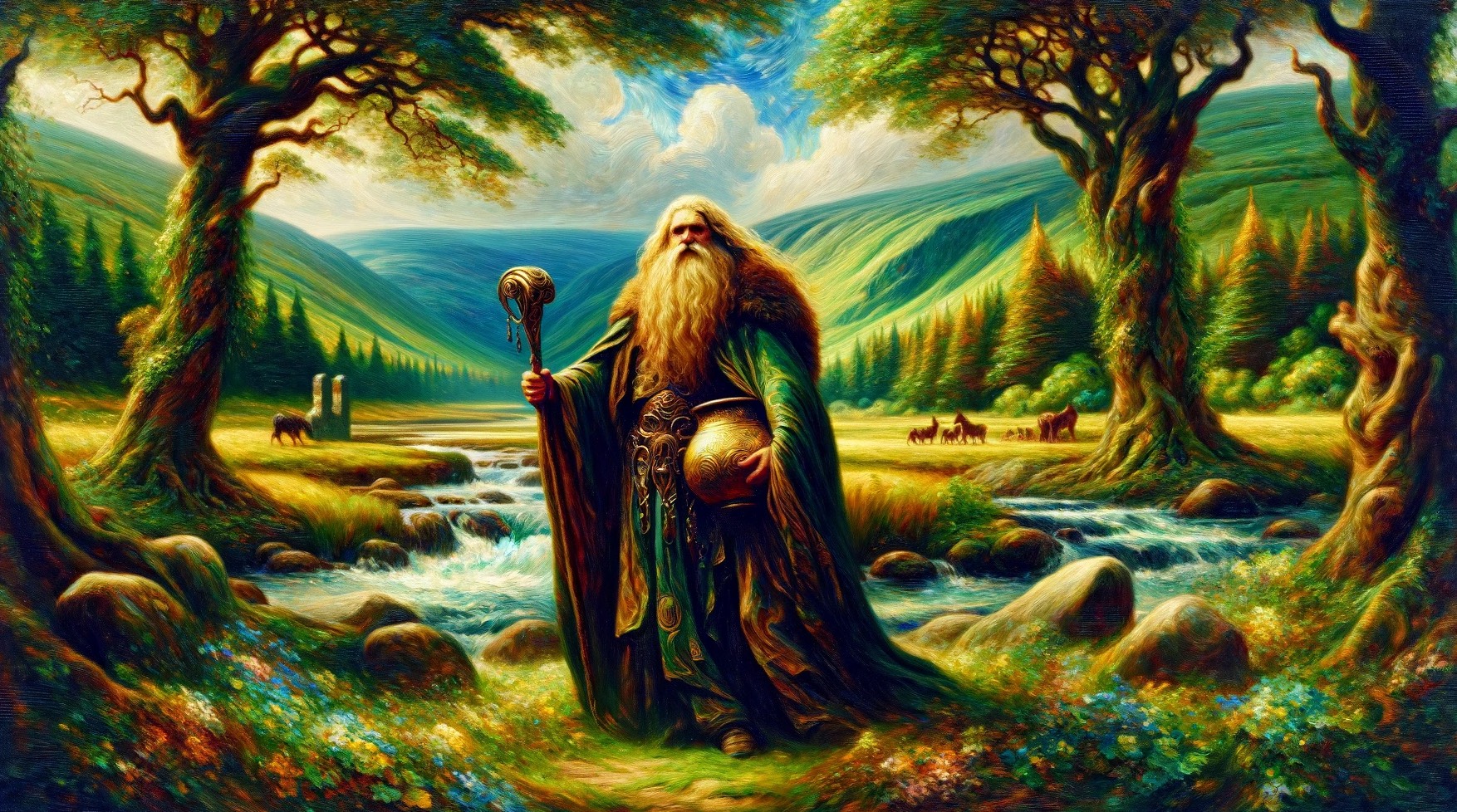
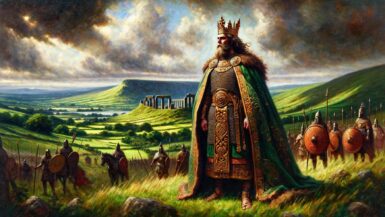
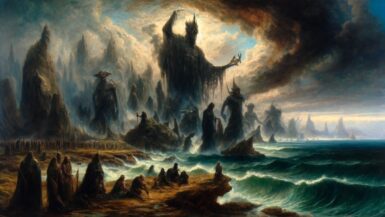
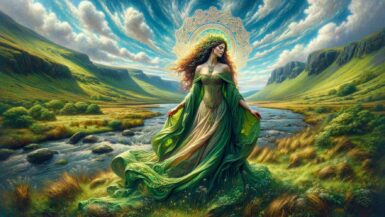
Leave a reply